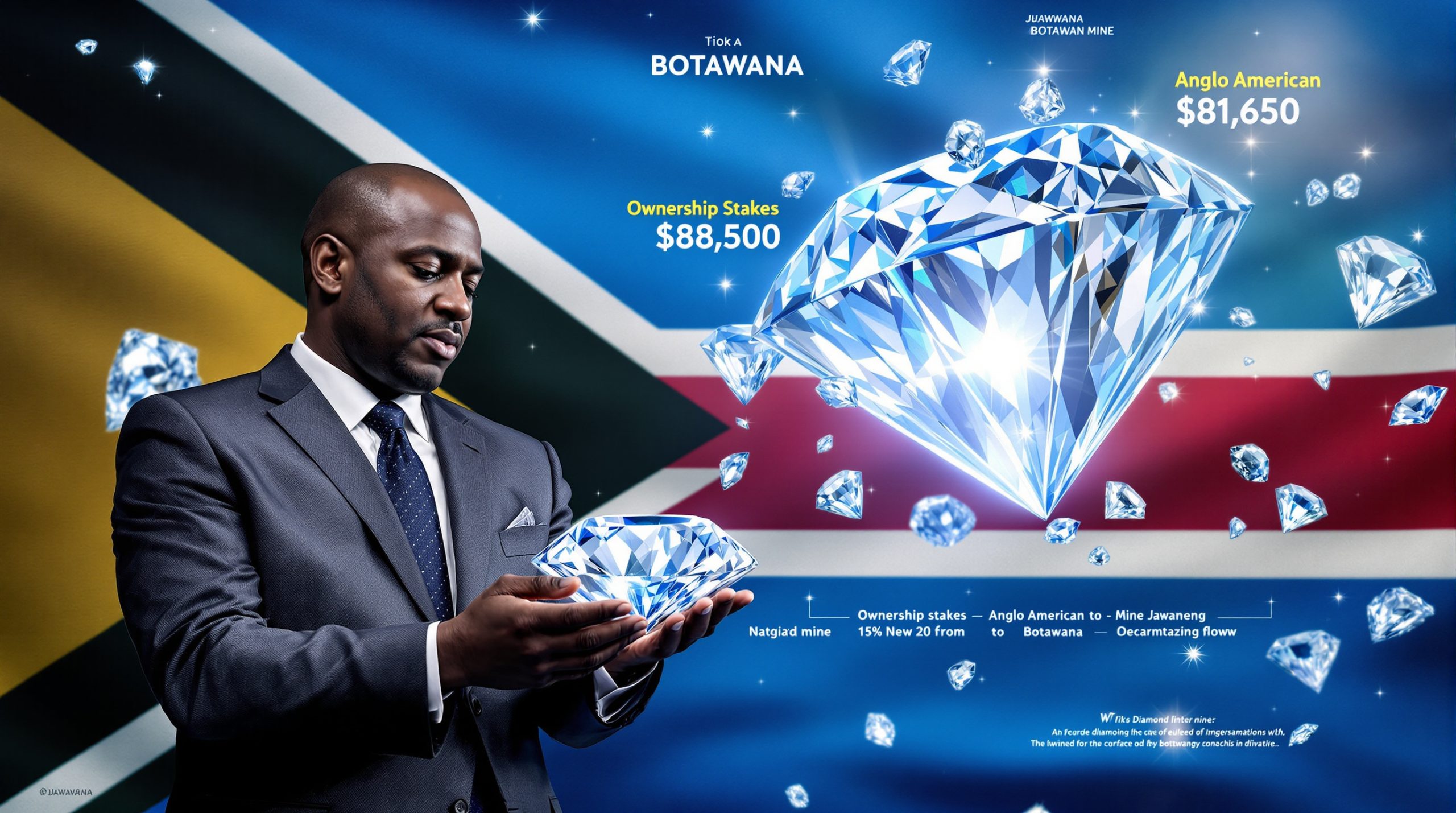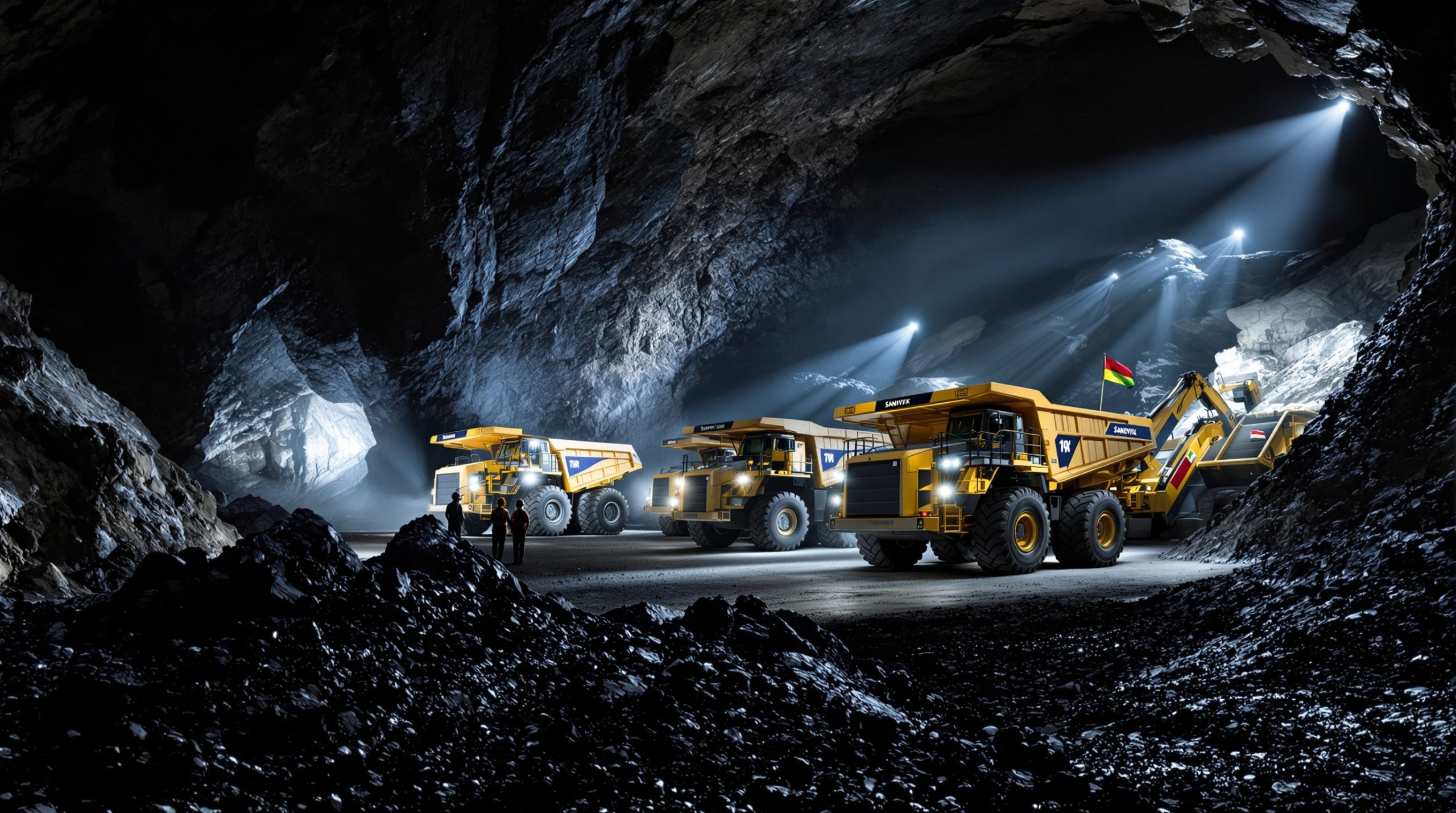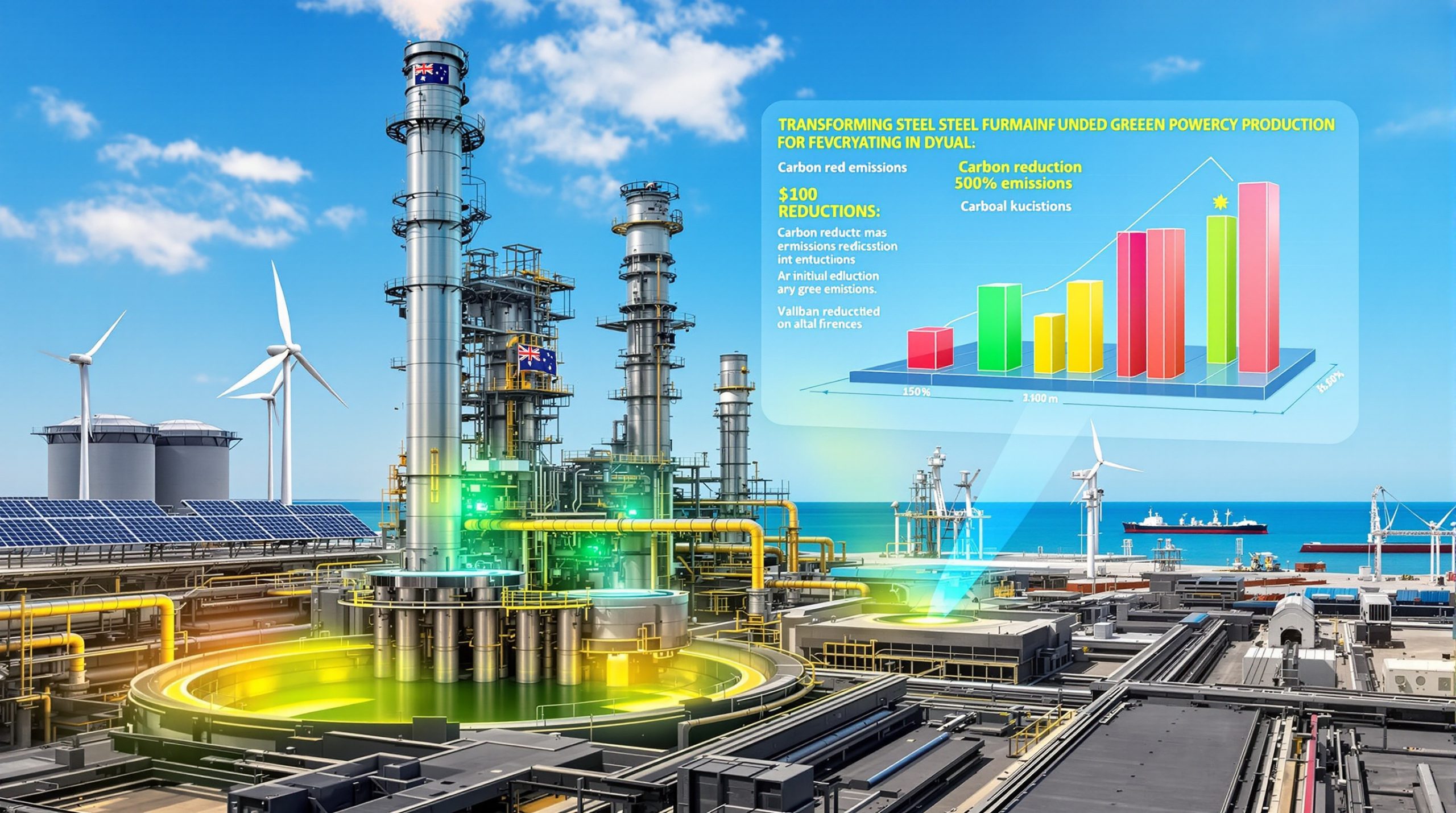Trump's Lithium Strategy: The Battle Over Thacker Pass and America's Mineral Independence
The Trump administration has taken an unprecedented approach to securing America's lithium supply chain, focusing on the strategic Thacker Pass project in Nevada. This massive lithium deposit, poised to become the Western Hemisphere's largest lithium source when operational in 2028, has become a focal point in the administration's Trump's critical minerals order.
Trump's Vision for Domestic Lithium Production
The administration has proposed acquiring a significant equity stake—between 5% and 10%—in Lithium Americas, the company developing Thacker Pass. This move represents a dramatic shift in how the government approaches critical mineral security, moving from regulatory oversight to direct investment and partial ownership.
The proposal aligns with Trump's broader economic security vision, which emphasizes direct government involvement in industries deemed vital to national interests. This approach marks a significant departure from traditional hands-off policies that have characterized previous administrations' approaches to mining and resource development.
The Strategic Importance of Thacker Pass
Thacker Pass represents a potential game-changer for American lithium production. When fully operational, the project is expected to produce 40,000 metric tons of battery-quality lithium carbonate annually—enough to power approximately 800,000 electric vehicles. This output would dramatically increase domestic supply, dwarfing current U.S. production, which stands at less than 5,000 metric tons from Albemarle's Nevada facility.
Located just 25 miles south of Nevada's border with Oregon, the site has been under construction for nearly a year with over 600 contractors already working on development. The sheer scale of the operation positions it to become a cornerstone of America's battery materials supply chain.
Why Is The Thacker Pass Lithium Mine So Important?
A Critical Link in America's Supply Chain
The $2.93 billion Thacker Pass project stands at the intersection of national security, economic development, and technological advancement. As global demand for lithium continues to surge, driven primarily by electric vehicle manufacturing and renewable energy storage systems, securing domestic sources of this critical mineral has become a strategic priority.
The project's significance extends beyond simple resource extraction—it represents America's attempt to establish sovereignty over a critical part of the clean energy supply chain that has historically been dominated by foreign powers.
Breaking China's Dominance in Lithium Processing
While the U.S. seeks to boost domestic lithium production, China currently processes over 75% of the world's lithium into battery-grade material. This processing dominance gives China significant leverage in the global lithium supply chain, despite producing only 40,000 metric tons annually (making it the third-largest producer after Australia and Chile).
This processing monopoly creates a strategic vulnerability for the United States and other Western nations, as even lithium mined elsewhere often must pass through Chinese refineries before reaching end users. Thacker Pass aims to address this vulnerability by creating a complete mine-to-battery domestic supply chain.
Bipartisan Support Amid Changing Policies
The project has enjoyed support across party lines, with both Republican and Democratic administrations recognizing its strategic importance. Initially approved during Trump's first term, the project received a $2.26 billion loan from the Department of Energy's Loan Programs Office under the Biden administration.
This rare bipartisan consensus underscores the project's perceived importance to American industrial policy, regardless of which party controls the White House. Industry experts note that this consistent support provides crucial regulatory stability for a project with a multi-year development timeline.
What's Behind The Government's Equity Stake Request?
Protecting Taxpayer Investments
The Trump administration's request for an equity stake comes amid concerns about Lithium Americas' ability to repay the substantial federal loan given current market conditions. A White House official summarized the administration's position: "President Trump supports this project. He wants it to succeed and also be fair to taxpayers. But there's no such thing as free money."
The administration's approach reflects a growing sentiment that taxpayers should receive more direct benefits from government investments in strategic industries rather than simply providing low-interest loans without upside potential.
Market Response to Government Involvement
The market has responded positively to the administration's interest in the project. Following news of the potential equity stake, Lithium Americas' shares surged approximately 80% in aftermarket trading, jumping from around $3 to $5.54 per share—a strong indicator of investor confidence in government backing.
This dramatic price movement demonstrates how government participation can transform market perceptions of mining projects, particularly in strategically important sectors where policy support is critical to long-term success.
Renegotiating Terms with General Motors
The administration is also seeking to modify General Motors' involvement in the project. GM invested $625 million last year for a 38% stake and secured rights to purchase all lithium from the mine's first phase and a portion from the second phase over 20 years. Trump officials are now pushing for guaranteed purchase commitments from GM and potential changes to GM's control over certain aspects of the project.
This renegotiation aims to ensure that the benefits of the project—developed with substantial taxpayer support—flow primarily to American manufacturers and consumers rather than being potentially diverted to international markets or competitors.
How Does This Compare To Other Government Mineral Initiatives?
A Pattern of Strategic Investments
The proposed stake in Lithium Americas aligns with a broader pattern of direct government investment in critical industries. The Trump administration has taken similar positions in companies like Intel and MP Materials, viewing these investments as essential to national security and economic competitiveness.
This interventionist approach represents a significant shift from traditional U.S. industrial policy, which has historically relied more on tax incentives, regulatory frameworks, and research funding rather than direct equity stakes in private companies.
Safeguards and Government Protections
The original loan terms already include several safeguards that give the government options to take control of the project if it faces significant delays or cost overruns. These protections reflect the strategic importance of the project to America's energy transition strategy.
These contractual provisions include:
- Rights to assume operational control under specified circumstances
- Performance milestones that must be met to maintain loan status
- Environmental compliance requirements
- Financial reporting obligations
The Broader Critical Minerals Landscape
Lithium Americas is just one of several companies developing U.S. lithium projects, including ioneer, Exxon Mobil, and Standard Lithium. The administration's approach to Thacker Pass may set precedents for how it engages with these other projects as part of its broader critical minerals strategy.
The policy approach taken with Thacker Pass could establish a template for government involvement in other strategic mineral developments, potentially reshaping the economic model for resource extraction throughout the critical minerals sector.
What Are The Financial Details Of The Thacker Pass Project?
The Economics of America's Largest Lithium Mine
The total investment in Thacker Pass is projected at $2.93 billion, with the Department of Energy providing a $2.26 billion loan with a 24-year term. Interest rates for this loan are based on U.S. Treasury rates as each tranche is drawn.
This financial structure represents one of the largest federal investments in a domestic mining project in recent history, highlighting the strategic importance the government places on securing lithium supply chains.
Restructuring Loan Repayments
Lithium Americas has proposed modifications to the loan's amortization schedule, seeking to adjust when certain principal payments would be made—though not changing the overall repayment timeline or total interest. In response to the administration's equity request, the company has offered no-cost warrants that would equate to 5-10% of its common shares.
This proposed restructuring reflects the challenges of financing large-scale mining projects in volatile commodity markets, where revenue projections may shift significantly between project approval and actual production.
Market Challenges and Chinese Competition
The administration's concerns about loan repayment stem partly from depressed lithium prices resulting from Chinese overproduction. This market dynamic highlights the complex interplay between domestic production goals and global battery metals investment realities.
The lithium market has experienced significant price volatility in recent years:
| Year | Lithium Carbonate Price Range (USD/ton) | Key Market Factors |
|---|---|---|
| 2021 | $13,000 – $25,000 | Supply shortages, EV demand surge |
| 2022 | $25,000 – $75,000 | Peak demand, supply constraints |
| 2023 | $35,000 – $70,000 | Continued high demand |
| 2024 | $18,000 – $35,000 | Chinese overproduction begins |
| 2025 | $15,000 – $25,000 | Market flooded with Chinese material |
This price instability creates significant challenges for project financing and long-term viability assessments.
What Does This Mean For America's Energy Independence?
Building a Domestic Battery Supply Chain
The Thacker Pass project represents a cornerstone in America's strategy to develop a complete domestic battery supply chain—from mining raw materials to manufacturing finished batteries. This vertical integration is seen as essential for reducing dependence on foreign suppliers, particularly China.
A complete domestic battery supply chain would include:
- Raw material extraction (lithium, nickel, cobalt, manganese)
- Chemical processing and refinement
- Cathode and anode production
- Cell manufacturing
- Battery pack assembly
Thacker Pass addresses the critical first step in this chain, providing the raw materials needed for downstream manufacturing.
Balancing Environmental and Economic Priorities
While the project promises significant economic benefits, including job creation and technological advancement, it also raises important questions about environmental impact and resource management. The administration's approach reflects an attempt to balance these competing priorities.
Environmental considerations include:
- Water usage in an arid region
- Habitat disruption for sensitive species
- Energy requirements for processing operations
- Waste management and tailings disposal
- Reclamation planning for post-mining landscape
These factors must be carefully weighed against the economic and strategic benefits the project promises to deliver.
Long-term Strategic Implications
The government's direct involvement in Thacker Pass signals a shift toward more interventionist policies in critical mineral development. This approach may reshape how America secures its supply chains for other strategic resources beyond lithium.
By taking a more active role in resource development, the government is effectively declaring that some minerals are too strategically important to be left entirely to market forces—a significant shift in American resource policy that could have far-reaching implications for future mining and processing projects.
How Might This Affect Future Lithium Projects?
Setting Precedents for Government Involvement
The administration's approach to Thacker Pass could establish new precedents for how the government engages with critical mineral projects. Future developers may need to anticipate potential government equity requests as part of their financing strategies.
This precedent may lead to:
- More complex financing structures incorporating government participation
- Different risk calculations for project developers
- New approaches to public-private partnerships in the mining sector
- Modified expectations from traditional mining investors
Accelerating Domestic Production
Government backing, both financial and political, may help accelerate the development of other lithium projects across the United States. This acceleration could be crucial for meeting growing demand from electric vehicle manufacturers and energy storage developers.
With major automakers committing to aggressive electrification targets, the demand for battery-grade lithium is projected to grow exponentially over the next decade:
| Year | Projected Global Lithium Demand (metric tons LCE) | U.S. Percentage of Global Demand |
|---|---|---|
| 2025 | 700,000 | 15% |
| 2030 | 1,500,000 | 20% |
| 2035 | 2,800,000 | 22% |
Meeting this demand will require multiple large-scale projects beyond just Thacker Pass.
Creating a More Competitive Landscape
With government support potentially tilting the playing field, companies developing U.S. lithium resources may find themselves operating in a more complex competitive environment—one where political considerations play an increasingly important role alongside traditional market factors.
This changing landscape may advantage companies that can effectively navigate both the technical challenges of innovative lithium extraction and the political complexities of government partnerships, creating new competitive dynamics in the domestic mining sector.
FAQs About Trump and the Thacker Pass Lithium Mine
What is the current status of the Thacker Pass lithium mine?
The Thacker Pass lithium mine is currently under construction with more than 600 contractors on site. The project is scheduled to begin production in 2028 and is expected to become the Western Hemisphere's largest source of lithium when fully operational.
How much lithium will Thacker Pass produce?
The first phase of the Thacker Pass project is expected to produce 40,000 metric tons of battery-quality lithium carbonate annually—enough to supply batteries for up to 800,000 electric vehicles.
What is General Motors' role in the Thacker Pass project?
GM invested $625 million in the mine last year for a 38% stake. The company has secured rights to purchase all lithium from the mine's first phase and a portion from the second phase over a 20-year period.
How does the Trump administration's approach differ from previous administrations?
While the project received initial approval during Trump's first term and loan support during the Biden administration, the current Trump administration is taking a more direct approach by seeking an equity stake in the company and renegotiating terms with both Lithium Americas and General Motors.
What other companies are developing lithium projects in the United States?
Besides Lithium Americas, companies including ioneer, Exxon Mobil, and Standard Lithium are also developing lithium projects in the United States as part of the broader push to secure domestic supply chains for critical minerals.
What extraction technology will be used at Thacker Pass?
Thacker Pass will utilize acid leaching technology to extract lithium from clay deposits, a different approach from the evaporation ponds used in South American operations or the hard-rock mining common in Australia. This technology offers potential environmental advantages but represents a less proven extraction method at commercial scale.
How might changing lithium prices affect the project's viability?
The project's financial viability depends on long-term lithium price projections. While current prices have been depressed by Chinese overproduction, many industry analysts expect prices to recover as EV adoption accelerates globally. The government's involvement provides a buffer against short-term market fluctuations that might otherwise threaten project development.
Furthermore, the administration is pushing for new lithium industry innovations to ensure that domestic production remains competitive despite market volatility.
Disclaimer: This article contains forward-looking statements about lithium markets, project timelines, and economic outcomes. These projections involve inherent risks and uncertainties, and actual results may differ materially from those anticipated. Readers should not make investment decisions based solely on the information presented.
Looking for the Next Major Mineral Discovery?
Don't miss the opportunity to gain a competitive advantage in your mining investments with Discovery Alert's proprietary Discovery IQ model, which delivers real-time notifications on significant ASX mineral discoveries and transforms complex data into actionable insights. Visit Discovery Alert's discoveries page to understand how early identification of major mineral discoveries can lead to substantial investment returns.




